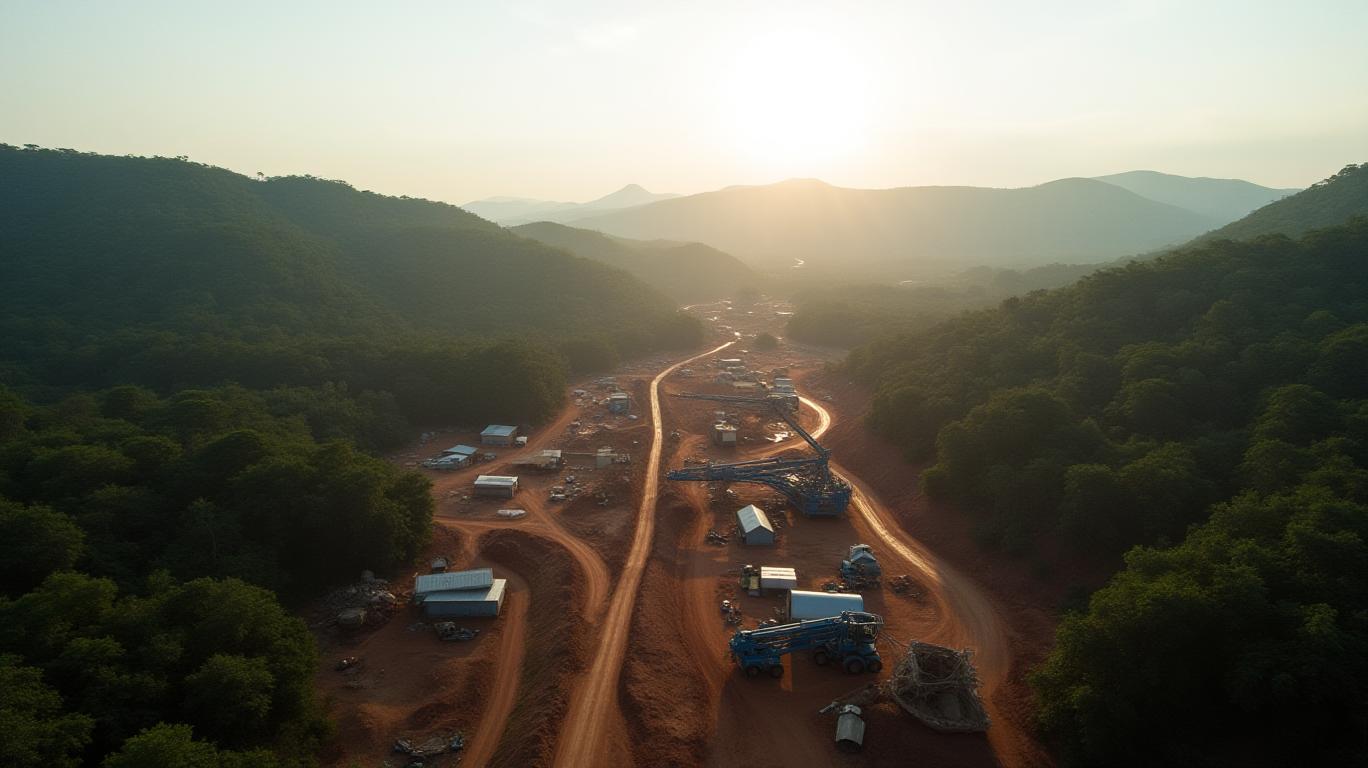Kamoa-Kakula Copper Complex: Navigating Seismic Uncertainty in a Growth-Driven Market
The Kamoa-Kakula Copper Complex, one of the world’s largest high-grade copper projects, has become a battleground for conflicting narratives.
and Zijin Mining’s recent disagreement over the impact of seismic activity on operations has investors questioning production reliability and strategic risks. Yet, amid the noise, the project’s fundamentals—and the broader battery metal boom—suggest this dispute could be a fleeting distraction for contrarian investors.
The Conflict: Fact vs. Perception
On May 18, 2025, Ivanhoe Mines temporarily halted underground operations at Kakula’s eastern section following seismic activity. Zijin Mining, its 39.6% partner, claimed the tremors caused “multiple roof-falling and rib-spalling” events, warning of potential delays to the 2025 production target of 520,000–580,000 tonnes of copper concentrate. Ivanhoe, however, dismissed these claims, stating geotechnical inspections found no evidence of collapsing stopes or pillars. The company attributed the tremors to routine “scaling”—rock falls from sidewalls—and emphasized that repairs to damaged infrastructure (cables, pipework) were underway.
The western section of Kakula, Ivanhoe noted, remained operational, with production resuming “shortly.” This divergence in narratives underscores the tension inherent in joint ventures: while Zijin prioritizes caution, Ivanhoe leans into its history of aggressive project execution.
Production Guidance: A Test of Credibility
The stakes are high. Kamoa-Kakula’s Phase 3 concentrator, processing stockpiled ore, continues at reduced capacity using ~3.8 million tonnes of stored material. Ivanhoe’s April 2025 record output of 50,176 tonnes—a 9% increase over March—bolsters its confidence in maintaining guidance. However, Zijin’s concerns reflect valid risks: if repairs are prolonged or if hidden structural issues emerge, the eastern section’s recovery could lag, squeezing output.
Investors will scrutinize Ivanhoe’s May 27 update, which promises “detailed findings” on the seismic impact. A resolution affirming production stability could reverse the 1.2% share dip seen on May 23. Conversely, confirmation of prolonged delays might pressure the stock further.
Market Sentiment: African Copper’s Bullish Backdrop
Despite the kerfuffle, the broader African copper sector remains a magnet for capital. The Democratic Republic of the Congo (DRC) and Zambia, accounting for ~40% of Africa’s copper output, are on track to meet 2025 production targets, driven by:
- Strategic investments: China Molybdenum’s $2.5 billion expansion at Tenke Fungurume (DRC), and Vedanta’s $1.3 billion relaunch of Konkola Copper Mine (Zambia).
- Rising demand: The IEA forecasts a 40% surge in copper demand by 2040, fueled by EVs and renewables. Each electric vehicle requires ~80kg of copper, compared to ~20kg in combustion-engine cars.
- Geopolitical tailwinds: The U.S. Inflation Reduction Act and EU Critical Raw Materials Act are incentivizing diversified supply chains, with Africa positioned as a low-cost, high-grade alternative to South America.
Analysts at BMO Capital Markets note that Kamoa-Kakula’s stockpile buffer and ongoing Phase 3 processing limit near-term revenue risk. Even if eastern operations are delayed, existing stockpiles could keep production on track until mid-2026.
Strategic Moves: Ivanhoe’s Playbook
Ivanhoe’s transparency is a strategic move to preempt panic. By scheduling the May 27 update, it signals control over the narrative—a stark contrast to opaque rivals. Additionally, its $1.67 billion allocation to the Kipushi mine (a satellite project) demonstrates a long-term vision to mitigate single-asset risk.
For Zijin, the disagreement highlights its balancing act between risk management and growth. While its caution may protect short-term capital, it risks missing out on Kamoa-Kakula’s full potential, projected to produce 250,000 tonnes annually by 2026.
The Investing Thesis: Opportunity or Overreach?
The dispute presents a contrarian bet. If Ivanhoe’s update confirms minimal operational disruption, IVN shares—trading at a 5% discount to their 52-week high—could rebound sharply. Meanwhile, the broader sector’s growth trajectory (Africa’s copper output is set to grow 15% YoY in 2025) offers a safety net.
Critics may argue that the DRC’s regulatory risks—tax disputes, labor strikes—outweigh project-specific optimism. Yet, Kamoa-Kakula’s 8% grade (among the highest globally) and $1.6 billion in annual cash flows (at $3.5/lb copper) provide a robust moat.
Final Call: Buy the Dip, but Watch the Update
The Ivanhoe-Zijin clash is a tempest in a teacup for investors with a 3–5 year horizon. Kamoa-Kakula’s dominance in high-grade copper, coupled with Africa’s structural growth, makes it a cornerstone of the battery metals boom.
Actionable Takeaway:
- Buy Ivanhoe Mines (TSX:IVN) if the May 27 update confirms production stability, targeting a 12-month price target of C$45 (up from C$38 at time of writing).
- Monitor Zijin Mining (HKEX:1433) for any divergence in performance, signaling broader sector sentiment shifts.
The seismic scare is a speed bump on a superhighway of demand. For those willing to look past the noise, Kamoa-Kakula remains a generational play.
Disclosure: This analysis is for informational purposes only. Investors should conduct their own due diligence before making decisions.

Comments
No comments yet